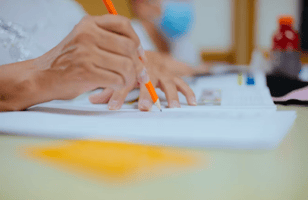Are you a college student interested in tutoring to help others and earn a little extra cash on the...
Understanding Students With ADHD
If you have been in the teaching or tutoring field for a long stretch of time, it is highly likely you have interacted with and supported students with ADHD. Whether you've been given a formal diagnosis, or have picked up on attention difficulty challenges, this condition is extremely common. While these behaviors might be frustrating for you to work with, especially in a group setting - this frustration is tenfold for the student who is experiencing impulsivity and hyperactivity. Every single student you come in contact with will have a different approach to learning. As a mentor, it is your responsibility to meet them where they are and help them soar with the skills that they have.
Let's take a peek at some of the top tips for understanding students with ADHD so that you can empower their strengths and champion their weaknesses.

What Is ADHD?
So, what exactly is ADHD? ADHD is the acronym used for attention deficit disorder. This disorder typically becomes apparent in childhood and usually follows the individual into their adult life as well. As children grow older, they will find new ways to cope with their attention challenges to make life a little bit easier. However, for children just starting out, finding the best coping strategies can be tough. Children who struggle with ADHD often find focusing in school to be a real challenge, which is why many of them seek extra help outside of the classroom.
Structure Is Your Friend
When it comes to tutoring ADHD students, embracing structure is the way to go. Because they are brains are moving at a million miles an hour, having a structure in place will help set expectations and take away any guessing. Being able to fall into a routine has proven to be extremely beneficial for children who struggle with attention deficit disorder. When it comes to creating a positive tutoring experience, make sure to embrace structure and solidify a routine so that the student knows what to expect each and every time they come in for a session.
Allow Breaks Frequently
For students who struggle with ADHD, frequent breaks are a must! It is more than okay to have students take a quick walk around the building or grab a drink of water in between lessons. In fact, these breaks will help them be more attentive when it's time to get back to work and complete their study session. \

Fidget Toys Are Okay!
When working with ADHD students, remind yourself that fidget toys are okay! While in some instances you might find these distracting for the student, they help give the child an activity to do with their hands, allowing their mind to free up and absorb the information you are covering in their tutoring session. If you can, try to provide students with play-doh, fidget spinners, or other toys they can use during their time with you.
Use Accommodations
Students with ADHD can also be given accommodations as a result of a formal diagnosis. Typically, classes will require students To have a formal diagnosis prior to granting accommodations such as increased test time, solo test-taking, or other support mechanisms. Be sure to work with your student and their family to help them feel empowered so that they can take advantage of every accommodation available to them.
We hope this article helped you better understand how to support students with ADHD so that they can be successful in your tutoring studio! If you are looking for support for your child or interested in helping students achieve success, contact SiSTEM Tutoring today.
.png?width=124&height=50&name=sistem_Logo%20-%20Transparent%20-%20Tagline%20(1).png)


